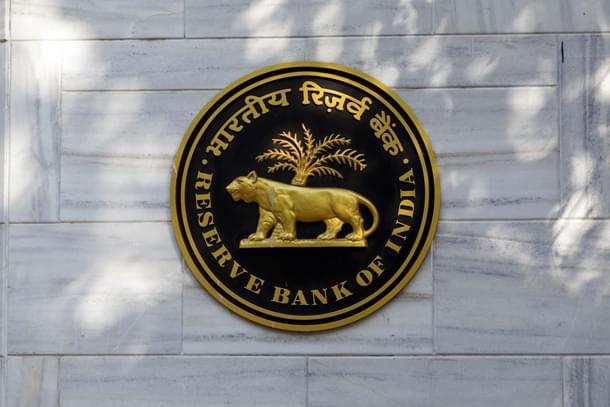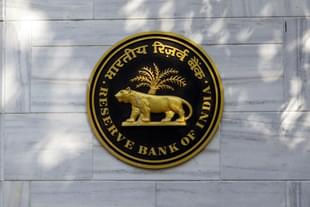Business
Explained: RBI's India Inflation Outlook For FY 2021-22
Business Briefs
Apr 09, 2022, 09:55 AM | Updated Apr 11, 2022, 06:16 AM IST
Save & read from anywhere!
Bookmark stories for easy access on any device or the Swarajya app.


Though the Monetary Policy Committee (MPC) decided to keep the benchmark repo rates at the current levels, ten-year bond yields jumped 2.96 per cent on Friday as the central bank signalled to tighten in the future. A jump in the yields indicates that investors are dumping these bonds in expectation of a rate increase in the future.
The RBI has clearly declared that while it has continued its accommodative stance, for now, it will begin withdrawing liquidity to keep inflation under control. In addition, the width of the Liquidity Adjustment Facility (LAF) corridor has been adjusted to 50 basis points – the rate differential that prevailed before the pandemic struck the global economy. The LAF indicates the differential between the repo and reverses repo rates.
Inflation, clearly, is the central bank’s top concern, as opposed to growth until a while back. RBI, like other central banks, had been expecting inflation to abate as the Covid crisis appeared to near its end, production had been ramping up, and supply chain issues were slowly being sorted out. However, the Russian invasion of Ukraine has thrown a spanner in the works. As a result, supply chain issues have begun to crop up again, while the supply of key commodities has been hit. Russia and Ukraine are globally significant producers of several key commodities such as crude oil, uranium, palladium, rare gases, sunflower oil, wheat, aluminium, nickel, and corn among others. The price of these commodities had skyrocketed following Russia’s invasion and could go higher if some analysts are to be believed.
RBI’s expectations of inflation easing have given way to a belief that inflation is likely to increase, and would stand at around 5.7 per cent in financial year 23 (FY23). Nevertheless, the central bank expects inflation to ease with each passing quarter of the current fiscal- 6.3 per cent in the first quarter, 5.8 per cent in the second quarter, 5.4 per cent in the third quarter, and 5.1 per cent in the fourth quarter. In case crude oil prices increase and remain beyond $ 100, or India has a lower-than-expected amount of rainfall, these figures could go higher.
Central banks usually try to anchor the inflation expectation in order to prevent significant deviations from the targeted levels. Expected inflation levels have a strong positive correlation with actual inflation.
Food prices are dependent on rainfall in India, and the RBI is betting on a “record Rabi harvest” to help prices remain under control. But, for commodities such as edible oil, which is a large importer, it expects prices to remain high for a while as producers have implemented import restrictions amid high prices. Russian too has implemented restrictions on the export of sunflower oil, while completely banning the export of sunflower seeds. Wheat prices are expected to remain elevated as exports from Russia and Ukraine are constrained.
The government’s introduction of the Standing Deposit Facility (SDF) requires no collateral, unlike the reverse repo rate where banks received government bonds as collateral in exchange for parking funds with RBI. SDF has been instituted to help RBI mop up excess liquidity that had been released into the financial system to help the country tide over the pandemic.
It is estimated that the country currently has excess liquidity of around Rs 8 lakh crores, making it imperative to slow down the process of tightening. In addition to a loose policy during the pandemic, an increase in the amounts of foreign funds into India over the last two years resulted in the RBI attempting to control the appreciation of the rupee. These interventions are said to have added to the existing rupee surplus. However, with investors becoming relatively risk-averse, withdrawing money from emerging markets, and the possibility of a steep tightening cycle in the United States would ensure possibly lower fund inflows into India. A report released by the NSE has highlighted that foreign institutions have remained net sellers over the last eleven months.
Nevertheless, RBI remains fairly optimistic on the other side of the coin - economic growth. Though private consumption and fixed investment are subdued, being 1.2 and 2.6 per cent higher than the pre-pandemic levels. However, it has cautioned about supply-side disruptions, monetary policy normalisation, a resurgence of Covid infections, and the shortage of key commodities among other issues potentially affecting economic growth in India. Other updates from the RBI included a new focus on sustainable finance amid climate instability, the introduction of interoperable card-less cash withdrawals, and the introduction of cyber security guidelines for payment system operators.





